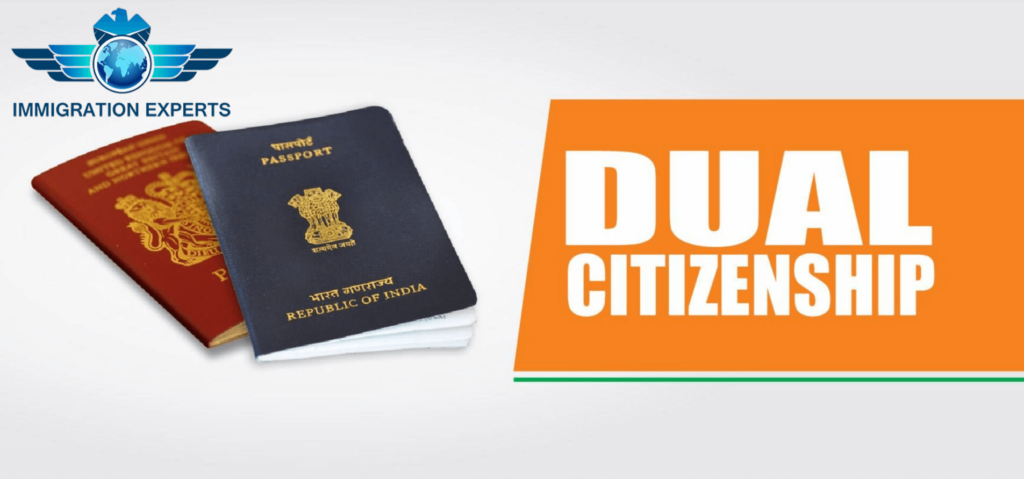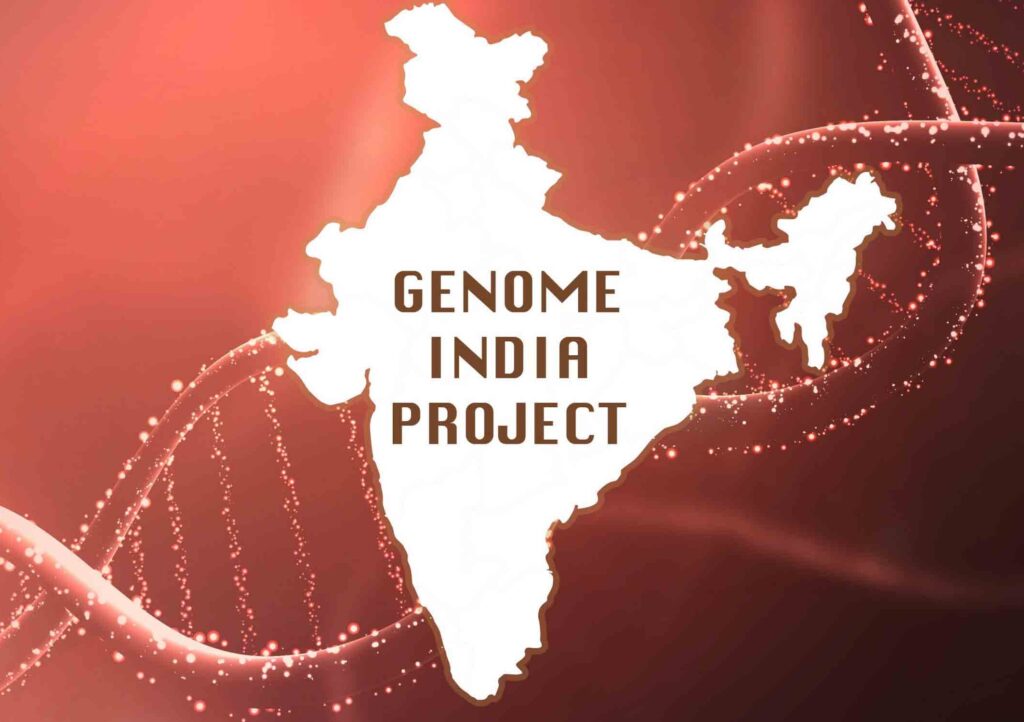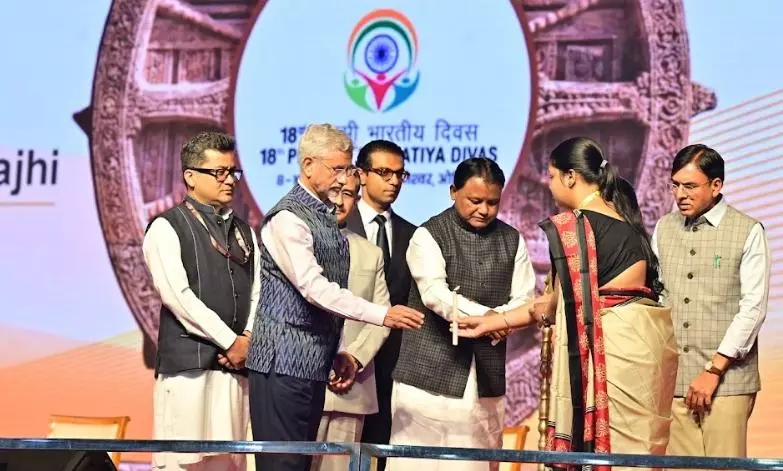Is India open to the idea of dual citizenship?
Source: The Hindu
Syllabus: GS II Governance and International Relations
Dual Citizenship in India: An Analysis
Introduction
The debate on dual citizenship in India has gained traction, with External Affairs Minister S. Jaishankar recently remarking on the challenges associated with such a proposal. While the Overseas Citizenship of India (OCI) card provides certain benefits to People of Indian Origin (PIOs), the question of granting dual citizenship remains contentious, with arguments both for and against.
Understanding the Context
To comprehend the debate, it is essential to distinguish between Non-Resident Indians (NRIs) and People of Indian Origin (PIOs):
- NRIs: These are Indian nationals holding Indian passports and enjoying most rights, except voting rights while residing abroad.
- PIOs: These individuals, of Indian descent but citizens of other countries, do not possess political rights in India. They are granted certain economic and travel privileges under the OCI scheme.
The OCI card, however, does not confer additional rights beyond what the PIO card offered, and its nomenclature has often led to confusion. Citizenship inherently carries political rights, which PIOs do not hold.

Arguments Against Dual Citizenship
- Constitutional Constraints:
- Part II of the Indian Constitution and the Citizenship Act clearly delineate who qualifies as a citizen.
- Article 5 outlines citizenship by birth, descent, or residency, while the Citizenship Amendment Act (2019) fast-tracked citizenship for persecuted minorities from neighboring countries.
- Divided Loyalties:
- Dual citizenship implies allegiance to two nations, creating potential conflicts in loyalty. Allowing individuals with dual citizenship to vote or hold political office could undermine the sanctity of India’s democratic process.
- Political rights, such as voting or contesting elections, must remain exclusive to those with undivided loyalty to India.
- Threat to Sovereignty:
- Granting dual citizenship may create a comprador class of individuals who serve foreign interests within India, thereby risking a new form of neo-colonialism.
- Examples from other countries, like the U.S., also showcase rigid limitations, where even naturalized citizens face restrictions (e.g., only U.S.-born individuals can become President).
Diaspora’s Role and Responsibilities
The Indian diaspora plays a significant role in enhancing bilateral ties, attracting investments, and fostering goodwill. Leaders such as Satya Nadella and Vivek Ramaswamy have contributed positively to India’s global image. However, extending political rights to the diaspora risks enabling undue influence over India’s political future. A clear boundary, or lakshman rekha, must separate the diaspora’s economic contributions from political engagement.
Conclusion
While the concept of dual citizenship may appeal to diasporic Indians, it poses significant risks to India’s sovereignty, unity, and democratic ethos. The current framework of OCI cards strikes a balance by allowing diasporic Indians to retain cultural and economic ties without compromising India’s political sanctity. As India continues to engage with its global diaspora, the focus must remain on fostering connections that do not dilute the integrity of Indian citizenship.
India releases compilation of 10,000 human genomes from 83 population groups
Source: The Hindu
Syllabus: GS III Science and Technology
India’s Genome Database: A Milestone in Precision Medicine and Biotechnology
Introduction
India has reached a significant scientific milestone with the successful completion of a database encompassing 10,000 human genomes from 83 population groups. This initiative, part of the Genome India Project, represents a pivotal step in decoding the genetic diversity of the nation. Housed at the Indian Biological Data Centre (IBDC) in Faridabad, Haryana, this dataset serves as a global resource for disease diagnosis, precision medicine, and drug development. The achievement aligns with India’s aspirations to become a global leader in biotechnology and life sciences.
Key Highlights of the Genome India Project
- Scope of the Database:
- The database includes genomes from 83 population groups, offering insights into India’s vast genetic diversity across its 4,600 population groups.
- Around 27 million low-frequency genetic variants have been identified, with 7 million unique to this dataset, not found in global reference databases.
- Global Accessibility:
- Researchers worldwide can access the database after submitting proposals reviewed by an independent panel.
- Strict data-sharing and privacy protocols ensure the ethical use of this sensitive information.
- Focus on Precision Medicine:
- The project emphasizes studying genetic predispositions to diseases and adverse drug reactions.
- Findings aim to enable targeted clinical interventions, driving advancements in precision medicine for improved healthcare outcomes.
- Anonymized Data for Privacy:
- Population data is numerically coded to avoid sociocultural sensitivities, ensuring research integrity while preserving anonymity.
Significance of the Genome India Project
- Scientific Advancements:
- The database provides a robust foundation for genetic research, including disease prediction, drug development, and genomic profiling.
- By addressing gaps in genetic data from underrepresented populations, it enhances global scientific understanding.
- Strengthening the Biotechnology Economy:
- The project is expected to catalyze India’s biotechnology sector, including biotechnology-based manufacturing, aligning with the vision of self-reliance (Atmanirbhar Bharat).
- Prime Minister Modi emphasized the potential of this initiative to make India a global hub for genomics and life sciences.
- Enhancing Healthcare Outcomes:
- The data can revolutionize healthcare by enabling early disease detection, developing personalized treatment strategies, and identifying genetic risk factors unique to the Indian population.
- Foundation for Future Expansion:
- While the current dataset represents about 2% of India’s population groups, it lays the groundwork for scaling up to a million genomes, significantly enriching the understanding of India’s genetic diversity.
Key Applications in Healthcare and Beyond
- Understanding Genetic Risk Factors for Diseases:
- MYBPC3 mutation: Found in 4.5% of Indians, associated with early cardiac arrest.
- LAMB3 mutation: Linked to a lethal skin condition in 4% of the population near Madurai.
- Advancing Targeted Treatments:
- Enables development of mRNA vaccines for diseases like pancreatic cancer.
- Facilitates therapies for genetic disorders unique to Indian populations.
- Enhancing Drug Efficacy and Safety:
- Identifies genetic variants impacting drug metabolism, ensuring safer and more effective treatments.
Challenges and the Way Forward
- Resource Limitations:
- Expanding the database to cover more population groups will require substantial financial and logistical investments.
- Ethical and Privacy Concerns:
- Ensuring the confidentiality and secure handling of genomic data is critical to maintaining public trust.
- Capacity Building:
- Training researchers and developing infrastructure for advanced genomic studies is essential to unlock the full potential of this initiative.
- Scalability and Sustainability:
- Scaling the project to a million genomes while ensuring inclusivity and maintaining ethical standards will be a major undertaking.

Conclusion
The Genome India Project is a landmark initiative that highlights India’s scientific prowess and commitment to leveraging genomic science for public good. By fostering global collaboration, enabling precision medicine, and driving biotechnology-driven economic growth, this project positions India as a leader in genomic research. Sustained investments, capacity building, and robust ethical frameworks will be key to maximizing its potential. The initiative is not just a testament to India’s technological advancements but also a transformative step toward revolutionizing healthcare and uplifting the nation’s global scientific stature.
Decoding India’s growth slowdown
Source: The Hindu
Syllabus: GS III Indian Economy and Economic Development
Decoding India’s Growth Slowdown: Challenges and Policy Imperatives
Introduction
The first advance estimates of India’s Gross Domestic Product (GDP) for 2024-25, released by the National Statistics Office (NSO), reveal a decline in real GDP growth to 6.4%, compared to 8.2% in 2023-24. This is lower than the 6.5-7% range projected by the Economic Survey 2023-24. Nominal GDP growth, estimated at 9.7%, also falls short of the 10.5% projected in the last Union Budget. This slowdown raises critical questions about India’s economic trajectory, revenue mobilization strategies, and structural challenges.
Key Issues and Challenges
- Data Discrepancies in GDP Estimation:
- The reliance on the Wholesale Price Index (WPI) as a GDP deflator instead of the Producer Price Index (PPI) introduces volatility in official GDP estimates.
- For instance, in 2023-24, despite retail inflation at 5.4%, the GDP deflator was only 1.4%, reflecting anomalies caused by WPI’s high volatility.
- Such discrepancies obscure real economic trends, potentially leading to policy errors.
- Elusive Private Investment:
- The Union Budget 2024-25 heavily relied on a revival of private corporate capital expenditure to boost employment and growth. However, private sector investment has been sluggish, with a decline in real gross fixed capital formation growth from 9% in 2023-24 to 6.4% in 2024-25.
- Corporate tax cuts introduced in 2019 failed to spur significant private investments, instead fueling short-term gains in corporate earnings and equity markets.
- Sectoral Performance:
- Key sectors, including manufacturing, mining, power, construction, and services such as retail trade and transport, have witnessed a deceleration in Gross Value Added (GVA) growth since 2023-24.
- Public administration and defence are among the few sectors projected to grow faster, underscoring the role of public expenditure in sustaining economic growth.
- Fiscal Strains:
- Tax revenue mobilization has lagged behind targets, with only 56% of the ₹25.83 trillion budgeted net tax revenues achieved by November 2024.
- This shortfall has disrupted capital expenditure plans, with less than half of the ₹11.11 trillion allocated for capex spent by the same period.
- Adhering to fiscal consolidation targets amid revenue shortfalls risks further aggravating the slowdown, while abandoning fiscal discipline is constrained by elevated public debt levels.
Comparative Analysis: UPA vs. NDA Growth Models
- Investment and Growth Patterns:
- During the UPA era (2004-05 to 2013-14), average annual real GDP growth was 6.8%, with private investment growing over 10% annually, driving a robust investment-led growth model.
- Under the NDA (2014-15 to 2019-20), average real GDP growth remained at 6.8%, but private investment growth fell to 6.3%, and public investment grew marginally faster than private investment.
- Post-Pandemic Trends:
- Recovery in 2021-22 was driven by base effects rather than structural changes in private investment behavior. Between 2022-23 and 2024-25, real GDP and investment grew at an average of 7.2%, with private consumption growth declining to 6%.
- Policy Lessons:
- The private investment-led boom experienced under the UPA remains elusive under the NDA, despite business-friendly policies like corporate tax cuts.
- Structural reforms and equitable growth strategies are necessary to stimulate widespread economic prosperity.
Policy Recommendations
- Revisiting Revenue Mobilization Strategies:
- Enhanced taxation on wealth and corporate profits can provide fiscal space for increased capital expenditure (capex) and welfare spending.
- Rationalizing tax policies to improve compliance and efficiency can address revenue shortfalls.
- Boosting Public Investment:
- Given the lackluster private investment response, public sector capex must play a leading role in reviving growth.
- Investments in infrastructure, green technologies, and rural development can yield long-term economic benefits.
- Improving Data Reliability:
- Transitioning to the Producer Price Index (PPI) for GDP deflation and addressing data discrepancies can enhance the credibility of national accounts.
- Developing seasonally adjusted and high-frequency GDP data can improve real-time economic monitoring.
- Structural Reforms for Inclusive Growth:
- Encouraging private sector participation in sectors like manufacturing and R&D is essential for long-term competitiveness.
- Strengthening social safety nets and labor market reforms can address consumption slowdowns and ensure equitable growth.
Conclusion
India’s economic slowdown underscores the need for a recalibration of fiscal policies, investment strategies, and data frameworks. While public spending remains a critical driver of growth, fostering private sector participation through targeted reforms is imperative. By addressing structural challenges and adopting inclusive growth policies, India can build a resilient economy capable of navigating global uncertainties and achieving its developmental aspirations.
What to know about Pravasi Bharatiya Diwas, inaugurated by PM Modi
Source: The Indian Express
Syllabus: GS II Governance, International Relations
18th Pravasi Bharatiya Divas: Honoring the Indian Diaspora’s Global Contributions
Introduction
The 18th Pravasi Bharatiya Divas (PBD) convention, inaugurated by Prime Minister Narendra Modi, highlighted the invaluable contributions of the Indian diaspora toward India’s development. Celebrated biennially, this event underscores the importance of reconnecting the Indian community abroad with their homeland. The 2025 theme, “Diaspora’s Contribution to a Viksit Bharat,” resonated with India’s aspirations to emerge as a developed nation by 2047.

What is Pravasi Bharatiya Diwas (PBD)?
- About PBD:
- Celebrated on January 9, the day Mahatma Gandhi returned to India from South Africa in 1915.
- Aims to strengthen the engagement of overseas Indians with India and recognize their role in nation-building.
- Initiated in 2003 by then-Prime Minister Atal Bihari Vajpayee.
- Evolution of PBD:
- Initially an annual event until 2015; now held once every two years.
- Organized by the Ministry of External Affairs (MEA) in collaboration with the Confederation of Indian Industry (CII) and other stakeholders.
- Pravasi Bharatiya Samman Award (PBSA):
- Conferred by the President of India to individuals or organizations of Indian origin for their exceptional contributions in diverse fields.
Significance of the Indian Diaspora
- Key Statistics:
- Global Presence: Over 3.5 crore Overseas Indians, including NRIs and OCIs.
- Major Communities:
- USA: 54 lakh
- UAE: 35 lakh
- Canada: 28 lakh
- Saudi Arabia: 24 lakh
- Economic Impact: $125 billion remitted to India in 2023.
- Political and Diplomatic Influence:
- Diaspora strengthens bilateral relations and promotes India’s interests globally.
- High-profile events like “Howdy Modi” (2019) showcase their influence, with diaspora members actively participating in politics in countries like the US and Canada.
How the Government Categorizes Overseas Indians
- Non-Resident Indians (NRIs): Indian citizens residing abroad.
- Overseas Citizens of India (OCIs):
- Foreign nationals of Indian origin registered under Section 7A of the Citizenship Act, 1955.
- Eligibility includes individuals or descendants who were Indian citizens after August 15, 1947, except those from Pakistan or Bangladesh.
- Merger of Categories:
- In 2015, the Persons of Indian Origin (PIO) category was abolished and merged with OCI.
Key Highlights of the 18th Pravasi Bharatiya Divas
- Chief Guest:
- Christine Carla Kangaloo, President of Trinidad & Tobago, addressed the convention virtually.
- Pravasi Bharatiya Samman Awards (PBSA) 2025:
- Global Representation: 27 awardees from 24 countries, including Malawi, Fiji, Spain, Romania, the US, and the UK.
- Notable Awardees:
- Lekh Raj Juneja (Japan): Recognized for contributions to science and technology.
- Robert Masih Nahar (Spain): Honored for community service, including promoting cricket in Catalonia.
- Syed Anwar Khursheed (Saudi Arabia): Awarded for medical services, serving as a royal protocol physician.
- Exhibitions and Research Proposals:
- Showcased historical journeys of Gujaratis to Oman (Mandvi to Muscat, 250 years ago).
- Proposed a database on Girmitiyas (indentured laborers) to study their migration, challenges, and contributions.
Prime Minister’s Message at the 18th Pravasi Bharatiya Divas
- Global Peace – From Yuddha to Buddha:
- Emphasized India’s advocacy for peace, drawing inspiration from Lord Buddha and Emperor Ashoka’s transformation at Dhauli, Odisha.
- India’s Expanding Global Role:
- Highlighted India’s leadership in representing the Global South and initiatives like making the African Union a permanent G20 member.
- Advocated the principle of “humanity first” in international engagements.
- Vision for a Viksit Bharat:
- Acknowledged the diaspora’s pivotal role in realizing India’s ambition to become a developed nation by its centenary of independence in 2047.
- Encouraged collaboration to protect and promote the diaspora’s legacy while contributing to India’s growth.
Challenges and Opportunities
- Challenges:
- Policy Integration: Ensuring diaspora participation aligns with national priorities.
- Data Privacy: Safeguarding personal and financial information of overseas Indians.
- Cultural Reconnection: Maintaining cultural ties across generations.
- Opportunities:
- Harnessing the economic potential of remittances to drive investments in critical sectors.
- Expanding soft power through cultural diplomacy and leveraging diaspora influence in global forums.
Conclusion
Pravasi Bharatiya Divas exemplifies India’s commitment to its diaspora, fostering a sense of belonging while recognizing their significant contributions. By emphasizing peace, humanity, and collaborative growth, India is poised to leverage its global diaspora to drive economic, cultural, and diplomatic advancements. Sustained engagement and innovative policies can further strengthen this bond, ensuring the diaspora remains an integral part of India’s journey toward a Viksit Bharat by 2047.